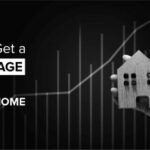To people who are keen on building their own home or property, conventional loans are a way to go. The regular loans that you come across can be so ambiguous sometimes, as there would be no particular limit based on the financial condition of a person, which is not the case with conventional loans. To keep the balls rolling, let us understand more about conventional loans.
What are Conventional Loans?
A conventional loan, in its simplest form, is a mortgage not backed by any governmental agency. Unlike FHA loans or VA loans, which have the backing of the Federal Housing Administration or the Department of Veteran Affairs, conventional loans stand on their own two feet. This means the lender assumes all the risk associated with the loan.
Having said that, let us understand conventional loan limits, the primary aspect of any conventional loan.
What is a Conventional Loan Limit?
The conventional loan limit is the maximum limit up to which someone can borrow a conventional loan from a private agency. In other words, it can be described as the highest dollar sum you can lend for a conventional mortgage. The FHFA, an agency that oversees Freddie and Fannie, fixes new conventional limits every year, considering the average home value in every US county. This boils down to the fact that the dollar limit that you borrow is directly linked to the county in which you are trying to buy your house.
For example, if you consider the year 2024, the conventional loan limit in the US is $766,550, but if you are planning to buy in an expensive area, it can go up to $1,149,825.
To understand in a more precise way, let us look into different loan limits in the US.
| Unit count | In most areas of the US | High Cost Areas | Alaska, Guam, Hawaii, and the Virgin Islands |
| 1 | $766,550 | $1,149,825 | $1,149,825 |
| 2 | $981,500 | $1,472,250 | $1,472,250 |
| 3 | $1,186, 350 | $1,779,525 | $1,779,525 |
| 4 | $1, 474,000 | $2,211,600 | $2,211,600 |
For more accurate information on what the loan amount is in your area, you can click here/9.
Why are Conventional Loan Limits Important?
Conventional loan limits are important for various reasons, given the flexibility and accessibility to the borrowers. Let us look at some of the strong reasons why conventional loan limits are totally worth it.
Budget-Friendly Housing
Conventional loan limits are the best way to secure your loan, as financing is affordable and accessible to a wide range of people. Usually, conventional loan limits are set based on the median house prices of different locations so that everyone who is about to buy a house can have an idea of which place they can afford one.
Less Risk
As conventional loan limits are limited to fixed rates, it will be beneficial to both the lenders and the borrowers as this strategy helps both the lenders and borrowers avoid taking excessive loan amounts that are above the borrower’s financial situation at the moment. Another noteworthy benefit is the financial awareness that a borrower can learn while availing of a conventional loan.
Regional Adaptability
As mentioned earlier, the arrangement of loan limits based on the regions and counties in the US makes it easy for the borrowers to understand the feasibility of taking a loan instead of getting confused over the diverse regions in the country. This method also ensures that individuals of all streams of income can get their home loan without having to get disappointed to acquire one, as loan limits are fixed from lower levels to higher affordable scales.
Market Stability
Market stability is the main motive of conventional loan limits. Lenders, especially those who are indulged in government-sponsored enterprises like Fannie Mae and Freddie Mac, should follow some standardized procedures without any deviations while lending loans to individuals. These standardizations make sure that every loan is provided in a consistent way throughout without any risk implications.
Regulatory Compliance
Following regulatory compliance plays a crucial role in any lending and borrowing framework. By going ahead with this procedure, both the lenders and borrowers can benefit tenfold. In addition, strong regulatory compliance enables every lender to build trust among both the mortgage market and the borrowers, thereby developing an ethical and committed lending procedure.
Variety of Loan Options
Conventional loan limits help people to borrow not only for their primary residence but also for various options like second homes, vacation homes, and seasonal investments, which are not usually available with government-backed loans.
By offering the flexibility of various occupancy options, market responsiveness also increases, aligning with the wide range of necessities and preferences of the borrowers, thereby resulting in the evolution of real estate investment.
Flexibility of Downpayment
Another interesting fact about conventional loan limits is the ease of acquiring the down payments. While it is often known that larger down payments contribute to higher amounts of mortgage, borrowers can select the down payment that matches their financial conditions by striking a healthy balance between the down payment and the loan.
Conclusion
Lending and borrowing loans can be a structured and sometimes tedious process, which makes it difficult for both lenders and borrowers to spill things out of hand due to excess loan amounts. Conventional loans are a way to make the loan process stable and create a healthy relationship between the lenders and the borrowers and between lenders and the market. At Bond Street Mortgage, we make it extremely feasible for every borrower to maintain their financial health and gain the best loans in the market.
Reach out to us today for tailored financial solutions!















